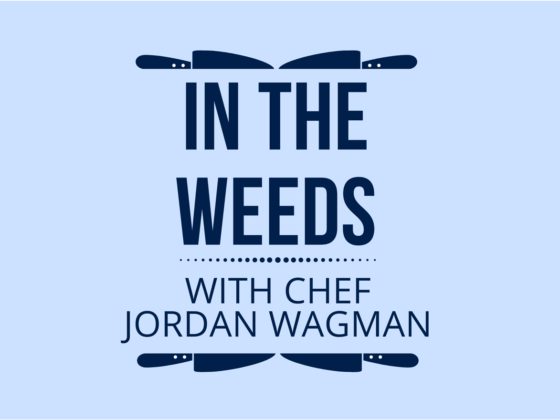At 25 years old, I was a cook who knew everything about life and running a kitchen. Two decades later, I realize how little that kid really knew.
For starters, when I started cooking professionally I knew very little about business. ‘Business’ wasn’t a course taught in culinary school. Seriously. Perhaps that sheds some light on why so many restaurants close their doors after a short-lived existence; chefs aren’t the best business people. They are artists. At least that is my opinion.
Sure, I’m a much better chef today than I was in my 20’s and 30’s because of my experience and knowledge. But it’s also because I’m a better business person. As a young chef, I always looked for the most expensive ingredients to play with, like foie gras and truffles. I cared little about their cost or my return on those dollars spent. Like I said, most young chefs are artists, and I was no exception.
In the early 2000’s I became chef of Pascal Restaurant in Newport Beach, California. Pascal Olhats is a disciple of Paul Bocuse and it was an honour to learn from him. Pascal was a fantastic chef. For me, that meant he was both an excellent cook and a sharp business person.
At the time, Pascal had one of the top French restaurants in Southern California. The food was exceptional and the décor was exquisite. The restaurant looked as though it had been plucked right from the south of France. Gorgeous floral table cloths and numerous bouquets of the most striking roses adorned the restaurant’s interior. I quickly learned that Pascal Restaurant was known as much for its food as its beautiful bouquets of roses. That was good business.
When I first arrived at Pascal, I knew dinner service would be busy however I was amazed at how packed their lunch service was too. Five days a week, Monday through Friday you could barely get a seat. Why? Before a server even filled a water glass, lunch guests were already eating complimentary cold salads waiting for them at their table. Yes. The salad was FREE! That’s right, free. Another element of Pascal’s good business. Doesn’t everyone love free?
pelon
Soon after moving to ‘Cali’ I started learning Spanish. The majority of my kitchen brigade were Spanish speaking, so I began learning phrases that I would need to use often; ‘peel the potatoes please’, ‘peel and clean the shrimp please’ and my favourite; ‘can you please make ‘carnitas’ for the staff meal this Friday? Every Friday my staff would create the greatest tacos I had ever eaten. A roasted pork shoulder with oranges and onions, finely chopped. They were the best then, and that still holds true today.
While the entire culinary team at Pascal was incredible, one person really stood out, Procoro.
Procoro was a young Mexican man who had moved his family from Mexico to California five years earlier, and had worked for Pascal ever since. He started as a dishwasher and was quickly promoted to line cook. Procoro worked the daytime shift so he could be at home with his family in the evenings. During the day, Procoro was the man behind the amazing salads. He taught me everything I know about how to make incredible salads, vinaigrettes, and dressings. He was a true master
Procoro also gave me my first Spanish nickname, ‘Pelon’. It means bald guy, which I like to think was a term of endearment. But I digress.

oil and vinegar
Salad making is really all about assembling the best seasonal ingredients and paring them with an incredibly flavourful vinaigrette or dressing. In truth, most of us can slice a cucumber, boil beans, or peel potatoes, but creating a great salad dressing is an art! According to Procoro, there are three types: vinegar based, oil based, and creamy dressing.
- Vinegar Based vinaigrettes are created by heating vinegar on the stove-top and infusing it with different aromatics, like herbs and spices. This simple technique creates vinaigrettes that are packed with HUGE flavour. They are perfect with pasta or grains like couscous, quinoa, or rice and are often used when deglazing pans with meat, fish, or chicken. My favorite vinegars are coconut, apple cider, and sherry.
- Oil Based vinaigrettes are the ones you are probably most familiar with. This is your typical vinaigrette with a 3:1 ratio of oil to acidity, where oil and vinegar are combined. The oil is similarly heated on the stove-top and infused with different fruits, vegetables, herbs, and spices. My favorite oil for vinaigrettes is olive oil.
- Creamy Dressing: The best example of this type of dressing is a Caesar salad dressing which is typically dairy based, thick, and creamy. There are three ingredients which I regularly use to create a creamy salad dressing; goat or sheep yogurt, dairy-free yogurt and avocados. These are perfect in potato or celery root salads and coleslaw.
I remember how Procoro would make gallons of dressing to compliment his hundreds of fresh, seasonal salad dishes. The salads were made from lower cost items like grains, legumes, fruits, and vegetables. But they packed a flavourful punch at no cost to the customer. Why?
It was good business. Free salads and a lunch menu were offered to bring people into the restaurant. Pascal would schmooze and chat with the clientele who would inevitably be back for dinner days later. Smart. I learned a lot about business and relationship building at Pascal and all of it has informed what smart business and relationship building means to me.
Who knew good business could start with a great salad (dressing)!
– Chef Jw

